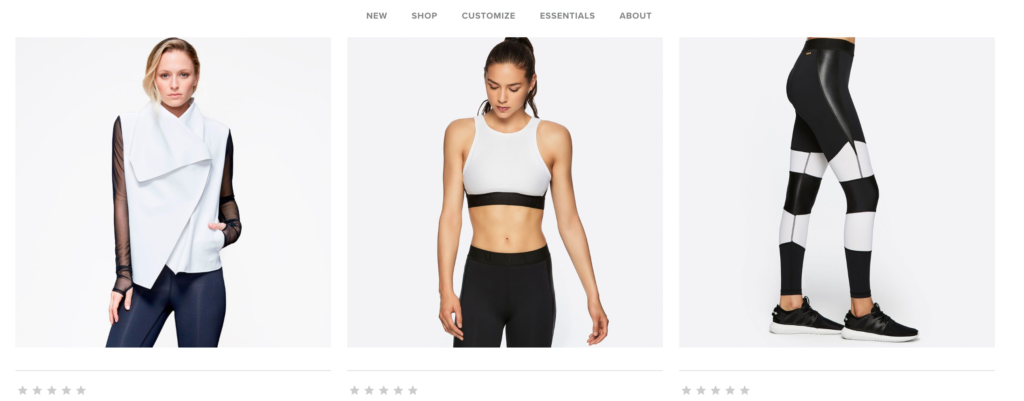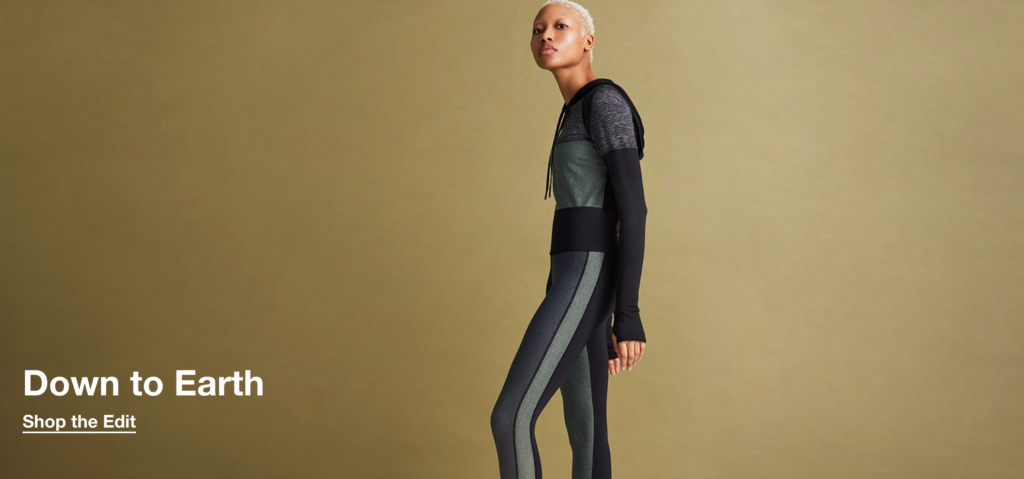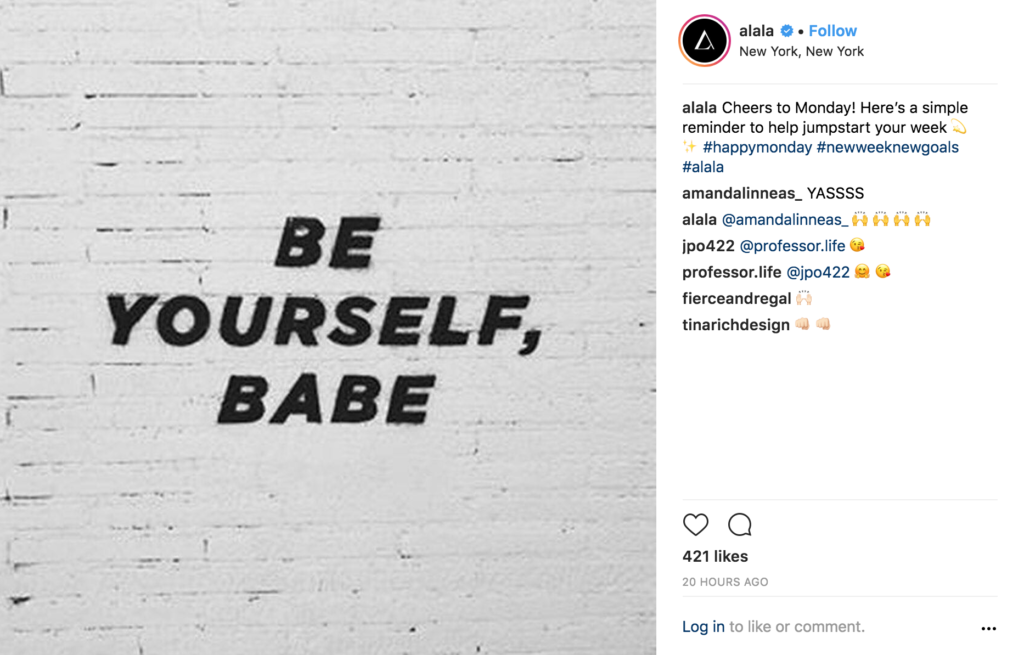Named for the Greek goddess who personified the battle cry, ALALA is a brand for and by serious warriors that has nailed the luxury niche in the crowded activewear space.
With new brands cropping up overnight, the global activewear market is set to top $231.7 billion by 2024. Not only is activewear taking over, sporting an 11% US growth rate in 2016 as compared to the apparel industry average of 3%, but their share of our closets is also growing as innovative brands prioritize versatility and design.
ALALA Founder Denise Lee is pioneering the movement towards boundary-pushing garments that can do more than just take you to spin class. With performance fabrics, mesh inlays and bold color-blocking, ALALA’s designs can go from the gym to dinner, making “jeans and a cute top” seem boring by comparison.

Designing and marketing apparel that helps your customers take on the world is about as complex as it sounds. Luckily, ALALA’s eCommerce and Digital Marketing Director, Avery Mehlhorn, was more than happy to break it down. Here’s a look at the answers to the questions you submitted for our exclusive AMA with her.
The A-Z of marketing an upstart brand
A: I hate to say things like this, but you have to define success. For example, we have been able to get some of the best ROAS [return on ad spend] on Facebook and Instagram. But we also have goals to grow, which means that we need to run campaigns that will be more about reach then ROAS. It’s always about finding that customer — wherever they are hiding in the digital sphere.
A: Start broad with no assumptions. If you have connected your systems up correctly, you will be able to look at people who engage with you, or who made a purchase. Filtering for those audiences, you can look at what those demographics look like. Facebook even offers a connection to Personix to give you information on whether you over-index with certain lifestyles etc. There is so much data at your fingertips if you set yourself up correctly.
A: Increasing traffic is never a problem. It’s really a question of how to get every marketing dollar to go as far as it possibly can — because I could go spend a ton of money with Facebook and immediately increase traffic to your site, but that most likely would implode your conversion rate and other KPIs. Knowing who your customer is and then targeting them is the best way to drive traffic. That could be done via Social Ads, PR, SEM, etc.
A: We work very hard to get our influencers on our Affiliate Program. This allows us to track exactly who is clicking and how many people are clicking. You won’t really be able to 100% attribute cross-channel uplift. You won’t even be able to really get to any statistical confidence without some major big-data investment. But, if there is a noticeable spike and the key thing that happened is x-influencer posted, then you will know that they had an affect. If you aren’t sure, test them again.
A: For seasonal product drops, we do a few things in order to support the season. We launch lookbook pages, and we allow our VIP customers early access to shop the collection. We also will create hype ads, letting customers know when the season will go live on the site.
Another thing we make sure to do is to communicate the season around a concept/story. For example, Fall 2017 was “La Femme,” based on the inspiration our designers were pulling from.

How does customer experience fit in?
A: The most important thing is that our customers love our apparel. If they are not happy with that — there is no amount of discounts or free shipping codes that will make up for it.
From an eCommerce angle: I define excellence in customer experience as creating excitement to purchase and eliminating moments of confusion or friction.
From a customer service perspective: We work hard to overcome any issues that a customer has.
A: Keeping the customer first is a discipline. I think the first step to staying customer-first is to realize their value beyond revenue. They can either work for you, or you can struggle to deal with them.
We also are not afraid to approach issues proactively. Order took forever to get out? We should be reaching out before it bothers the customer. We want to provide the best customer service so that our customer trusts us again and again.
One story we had was when we held a flash sale that did beyond anything we would have predicted. It took us weeks to get all the orders out, and in the chaos we were finding that stock levels were off, leaving customers with purchases that we had no stock of. A nightmare.
But really, we were able to flip this experience on its head and reach out to each and every customer apologizing for the delays, offering expedited shipping if they needed, and if they bought an item that was sold out, we refunded them the cost and asked them to pick two other styles that we would happily ship out as well. We found our customers, when we approached them in this way, were amazing. They actually were positive about the experience, versus being understandably upset.
A: The key to our success has been to not work too hard in defining the conversation or the community past being a brand for modern women who demand the best apparel that works just as hard as they do. We look to support those women by creating a space and allowing their voices to define it.
Secondly, we are a brand of women for women. We have coworkers who are passionate about current women’s issues. So it was really authentic for us to partner with organizations such as Equal Means Equal for Women’s History Month this past March, for example.

Increasing conversion and engagement on site
A: There are so many tactics to increase conversion rate. The first place to start is in your own digital real estate. Take a step back and really look at/for points of friction in your UX. Some issues can be solved quickly and easily, for example, CTA placement and color — others you might have to live with.Once you have a site that’s mostly there (it will never be 100%), then look at the traffic mix coming to your site.
If you want to increase the CVR, think about where you are validating your traffic. Are you priming people with a couple of touchpoints before they ever land on your site? If you are able in increase the amount of traffic coming to your site to be further down your funnel, your CVR will increase.
A: We really can’t make our customers do anything. We do reward them with a discount off their next purchase. We also are working on taking time to make these interactions feel more like a conversation with a friend, so that it is also an emotional reward versus just a fiscal one.
A: 100% yes. Men and women tend to consume visual input differently. At a very basic level, men are wired to be very visual, whereas women are wired to connect.
In the context of ALALA, I believe that if we are not communicating a lifestyle or feeling through our imagery, it will fall flat for our customers. Now, for the specifics of if you should be shooting layflats vs. on-model, showing the model’s face vs. not etc. — it really is going to depend on your brand. If you are not sure, A/B test. What works for one brand could be a kiss of death for another.
For more Q&A with ALALA, check out the full recording of the AMA below:



